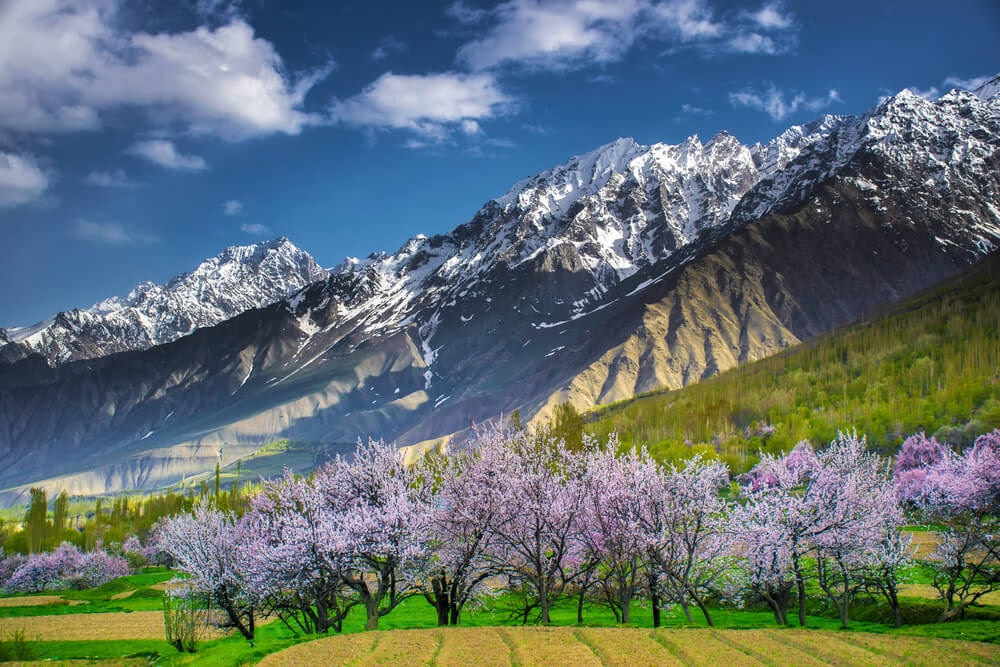As winter’s crisp embrace softens, Gilgit-Baltistan awakens to a breathtaking transformation. Spring arrives, typically spanning from mid-March to late April, painting the rugged landscapes with tender hues and vibrant life. Temperatures rise gently, pushing away the chill and inviting warmth back into the valleys. This season marks a profound shift, not just in climate, but in the very spirit of the region.
For locals, spring signifies renewed hope, the promise of new harvests, and a vibrant return to outdoor life. For tourists, it’s a spectacle, a period when Gilgit-Baltistan sheds its winter cloak and bursts into an explosion of natural beauty and cultural festivities. Everyone, from the seasoned farmer to the eager traveler, eagerly anticipates this transformational and culturally rich season. It’s truly when Gilgit-Baltistan comes alive, attracting thousands of visitors from around the world to witness its mesmerizing views.
Here’s a glimpse into the magic of spring as it unfolds month by month:
| Month | Natural Highlights | Cultural Events/Festivals | Activities & Experiences |
| March | Early almond/apricot blossoms in lower valleys; snowmelt begins; rivers swell. | Navroz (Nowruz) (March 21) – New Year celebrations, family gatherings, traditional games. | Village visits; early trekking accessible in lower altitudes; photography tours for early blossoms. |
| April | Peak cherry, apricot, apple blossoms; meadows turn lush green; wildflowers emerge. | Bo or Bee Ganik (Ghizer) – Spring welcoming with torches, dances, horse racing. | Blossom photography tours; gentle hiking; eco-tourism experiences; community interactions. |
| May | Full bloom across most valleys; high pastures greening; access to some higher areas begins. | Preparations for Ginani Festival begin; local music and dance performances. | Accessible trekking (e.g., Fairy Meadows, Naltar Lake); camping; cultural immersion. |
🏞️ Natural Beauty and Landscape During Spring
Spring’s arrival completely redefines Gilgit-Baltistan’s valleys. Hunza, Skardu, and Gilgit city—once draped in stark winter whites—now burst with color. The most stunning sight is the cherry blossom season, which runs from mid-March to late April. Majestic cherry, apricot, apple, almond, and peach trees explode into delicate blossoms, carpeting the valley floors in shades of pink, white, and soft green. This creates a dreamlike, picturesque scene, covering the area in a stunning landscape.
The towering mountains, still crowned with snow, offer a dramatic contrast to the blossoming lower altitudes. Meadows, previously dormant, transform into lush green carpets, often speckled with early wild flowers. Rivers, fed by melting glaciers, swell with crystal-clear water, their currents vibrant and strong, all set against clear blue skies.
Photo Opportunity: Visit Karimabad, Phander Valley, or Shigar Valley during peak blossom season for stunning panoramic shots of fruit orchards against snow-capped peaks.
🎉 Festivals and Cultural Activities
Spring in Gilgit-Baltistan pulses with life and celebration, as numerous festivals mark the season’s significance.
- Navroz (Nowruz) – March 21st: This ancient Persian New Year celebration holds deep cultural roots in Gilgit-Baltistan, especially within the Shina and Balti communities. Families meticulously clean their homes, prepare special festive foods, and gather for elaborate communal feasts. Navroz signifies renewal, prosperity, and the triumph of light over darkness. People exchange gifts, visit elders, and participate in local games like horse riding and wrestling.
- Bo or Bee Ganik (Spring Welcoming Festival) – Ghizer Region: Primarily celebrated in the picturesque Ghizer district, this traditional festival formally welcomes spring and the start of the agricultural cycle. Locals participate in torch-bearing processions, often carrying flaming torches through fields to symbolize purification and bless the land. Lively traditional dances, accompanied by local music, fill the air. Horse racing is a thrilling highlight, showcasing local equestrian skills. The “Seed Growing Festival” (often associated with Bo/Bee Ganik) is a farmer’s ritual to bless the land, marking the crucial beginning of the farming season.
- Ginani Festival (Harvest Blessing) – Mid to Late June (leading into summer): While primarily a summer harvest festival, preparations and early celebrations often begin in late spring, especially in Hunza. This festival celebrates the first yields of the wheat and barley crops. Communities offer prayers of thanks for a bountiful harvest, accompanied by traditional music and dances. It’s a time for communal feasting, featuring dishes made from fresh, early produce.
During these events, music resonates through the valleys with instruments like the surnai (oboe-like), dadang (drum), and rabab. Traditional dances, such as the energetic Sword Dance and other lively group folk performances, often take center stage. Local games like polo (smaller regional matches), tug-of-war, and traditional wrestling also draw crowds, fostering a strong sense of community and friendly competition.
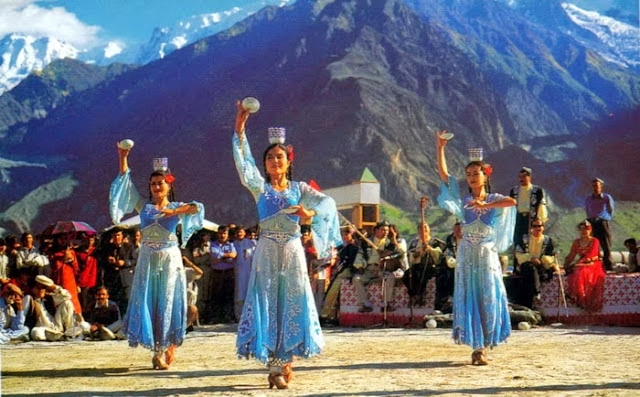
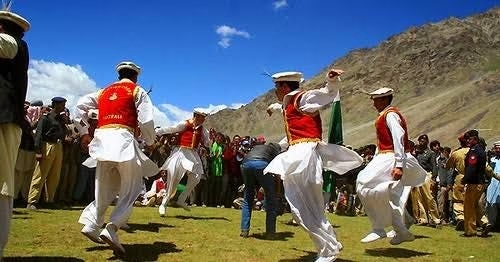
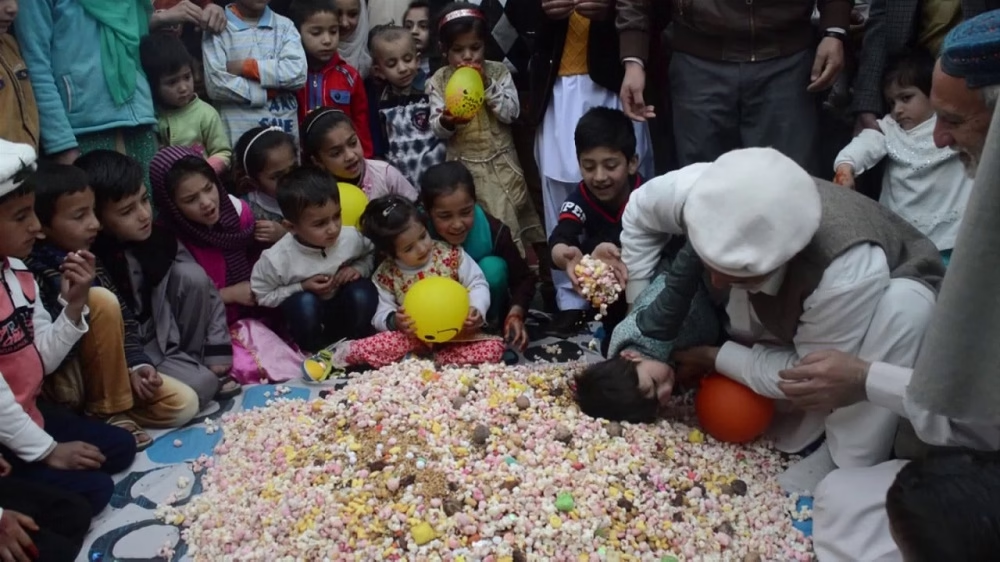
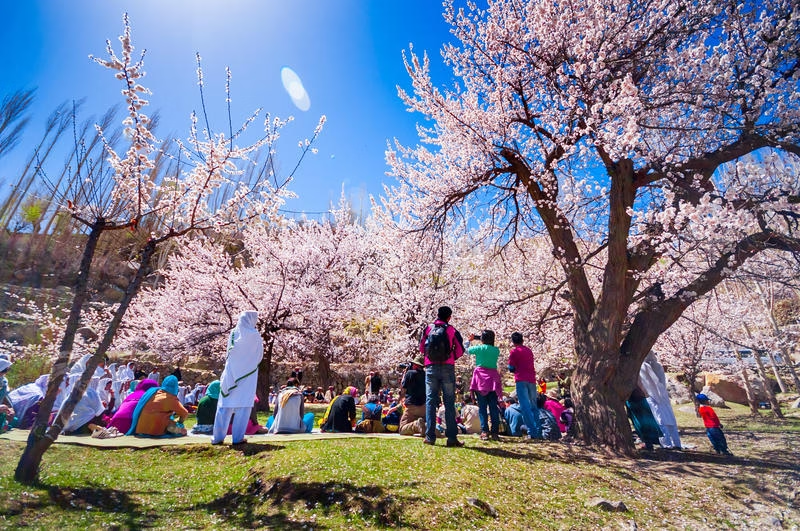
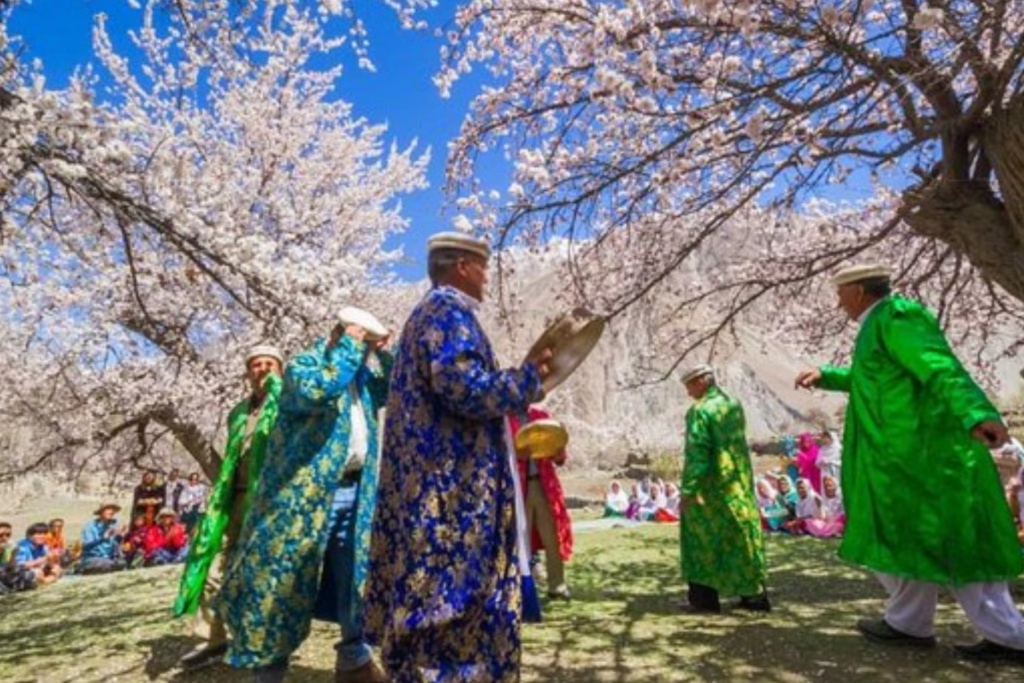
🧑🌾 Farming and Harvest Season
Spring signifies the crucial planting season across Gilgit-Baltistan. Farmers eagerly prepare their fields, working the soil that has rested through winter. They mainly plant crops like wheat, barley, maize, and various pulses.
Traditional farming methods, passed down through generations, remain prevalent. You can often witness communities coming together to assist each other during the planting season – a testament to the strong communal spirit that defines mountain life. Village elders guide younger generations, sharing invaluable knowledge about sustainable practices. As the weather warms, spring vegetable gardens burst forth with fresh greens, and the extensive orchards, heavy with promise, begin to bloom, hinting at the summer’s fruit harvest.
🥘 Local Spring Foods and Drinks
Spring brings a delightful freshness to Gilgit-Baltistan’s cuisine, as seasonal ingredients become available.
- Chapshuro: While enjoyed year-round, the spring version often features fresh herbs, giving this savory meat pie (filled with minced lamb or yak) an extra burst of flavor. It’s a hearty and satisfying dish.
- Gyaling: These springtime buckwheat pancakes are a local favorite. Often served with butter or local cheese, they celebrate the early grains of the season.
- Sharbat-e-Gulab or Herbal Teas: For refreshment, locals often prepare Sharbat-e-Gulab (rose syrup drink) or various herbal teas brewed from freshly collected wild herbs and flowers. These provide a refreshing and often medicinal boost after the long winter.
- Rehydrated Dried Fruits: Dried apricots and mulberries, staples stored from the previous year’s harvest, find new life. Locals rehydrate them in fresh spring water, creating delicious and nutritious snacks or desserts. This is especially comforting after winter’s more limited fresh produce.
Spring is when wild herbs and tender new greens, along with early fruits, begin to appear. Their cultural uses extend beyond food; many find their way into traditional medicines and aromatic teas, deeply connecting the community to its natural surroundings. Locally brewed drinks, sometimes made from fermented fruits or spring teas from wild herbs, also make an appearance, offering unique flavors of the season.
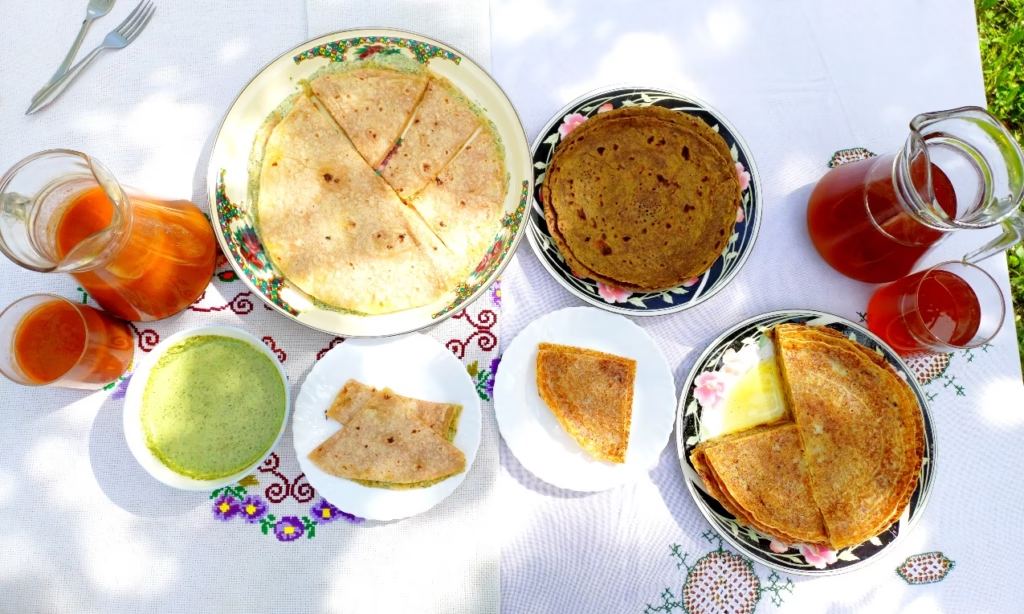
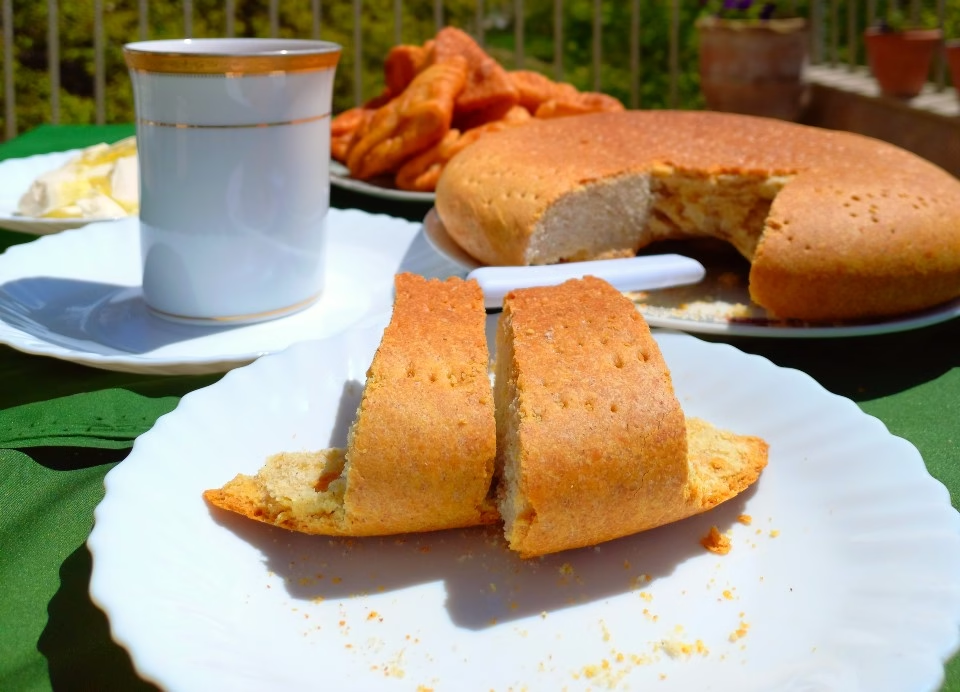
👣 Outdoor Activities & Tourism
Spring’s pleasant weather and accessible trails make it the ideal season for outdoor enthusiasts. Trekking, hiking, camping, and thrilling jeep tours become popular ways to explore the region’s raw beauty. Hunza Valley, in particular, attracts thousands of tourists to witness its mesmerizing spring blossom season and experience its four unique seasons. Tourists also get an opportunity to see the historical places in the areas which represent different histories.
Popular trails that become accessible include:
- Fairy Meadows: A verdant meadow offering iconic views of Nanga Parbat, often reachable by late spring.
- Naltar Lake: Known for its stunning turquoise waters and pine forests, perfect for leisurely walks.
- Rakaposhi Basecamp: A more challenging trek leading to panoramic views of the majestic Rakaposhi peak.
Photo Opportunity: Spring is prime time for photography tours. International tourists flock to capture the ethereal beauty of blossom-filled valleys against snow-capped mountains. Many tour operators specialize in these scenic photo excursions.
Furthermore, spring fosters eco-tourism and authentic village visits. Travelers can experience local life, interact with communities, and stay in charming guesthouses, gaining a deeper appreciation for Gilgit-Baltistan’s natural and cultural integrity.
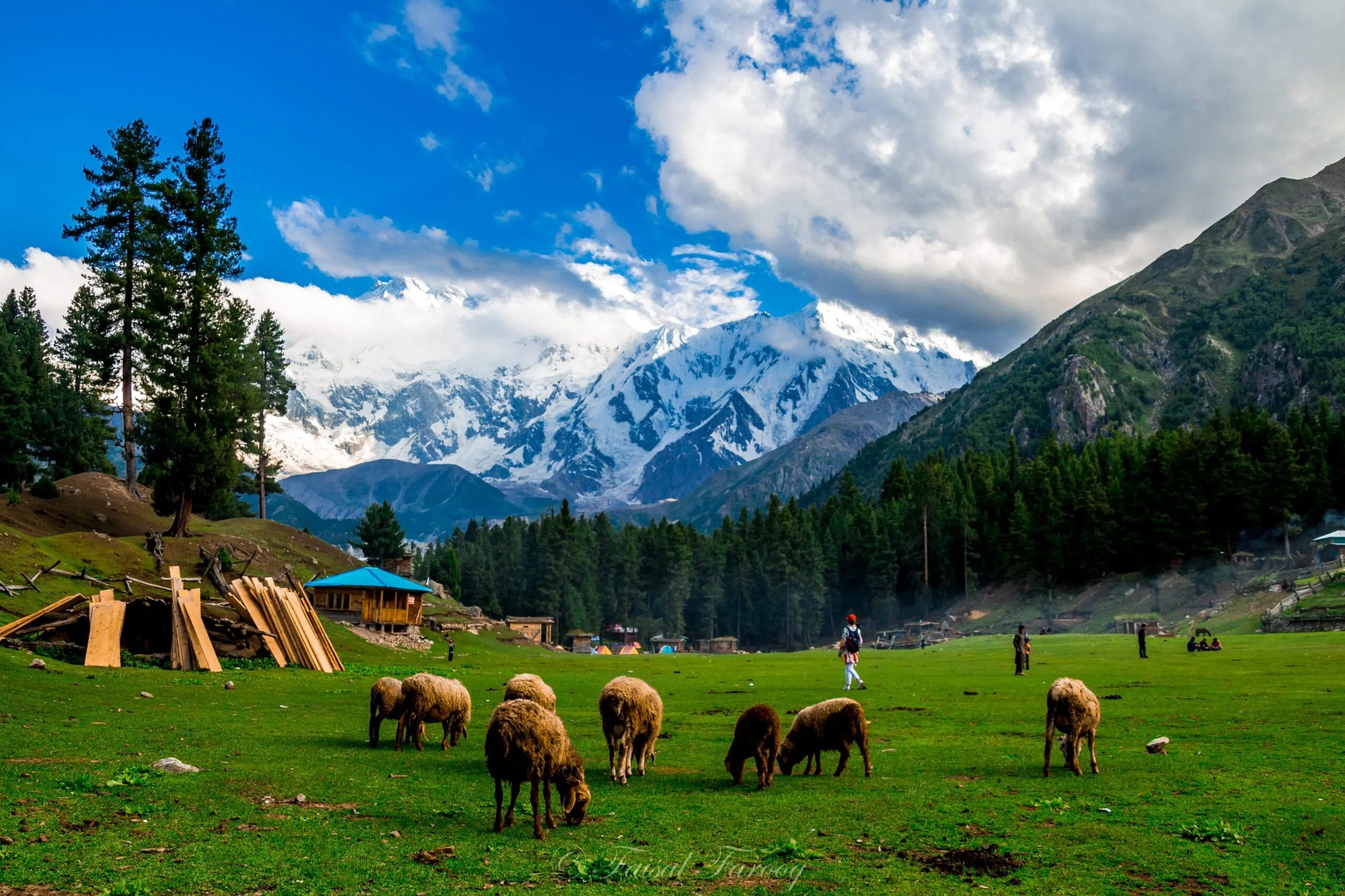
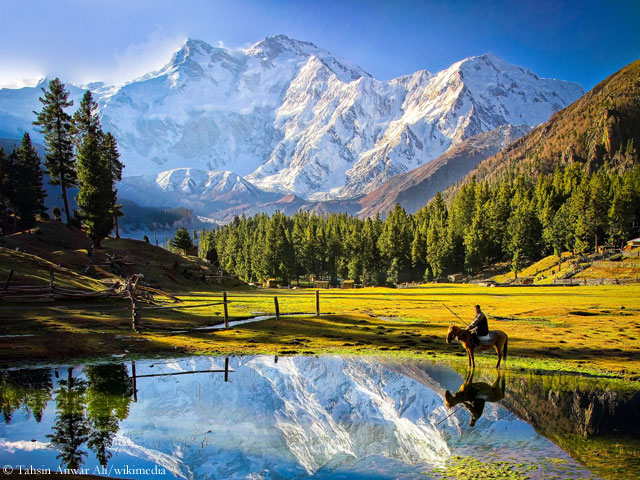
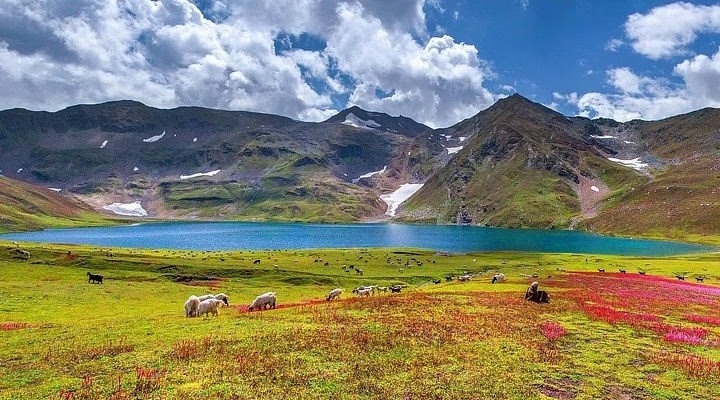
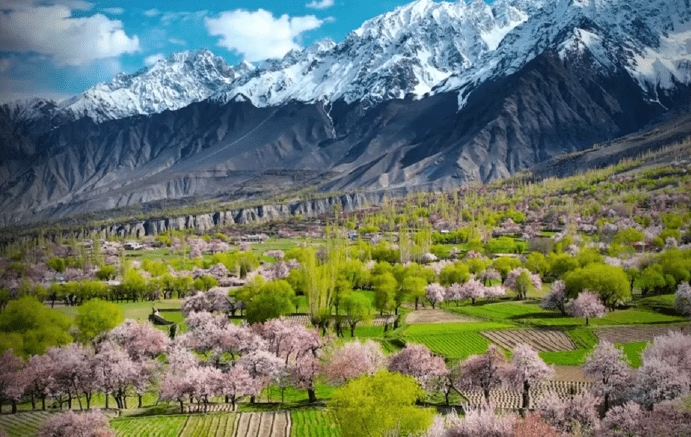
🧥 Traditional Clothing During Spring
As temperatures rise, locals transition from heavy winter wear to lighter, but still warm, wool clothes. Traditional attire remains prominent, especially during festivals. Men often don lighter woolen waistcoats over their shalwar-kameez, sometimes adorning their traditional caps (Khoi/Phartsun) with fresh feathers – a symbol of celebration and vitality. Women often opt for vibrant, embroidered shalwar-kameez or flowing gowns made of lighter fabrics, complemented by beautifully embroidered shawls or dupattas. This shift in fashion embodies comfort, practicality, and continued cultural pride as the landscape bursts into life.
🛍️ Handicrafts & Markets
Spring breathes new life into Gilgit-Baltistan’s handicraft scene. Small-scale spring craft fairs emerge, showcasing the exquisite artistry of local artisans. Visitors can find beautifully handwoven shawls made from fine local wool, intricately crafted baskets from willow and other natural fibers, and unique pieces of jewelry featuring local stones like turquoise and silver.
Local women, renowned for their nimble hands and artistic flair, spend the winter months meticulously preparing these traditional crafts. With the onset of spring and the arrival of tourists, they bring their creations to local markets and makeshift stalls. This provides an important source of income and allows them to share their cultural heritage with the world.
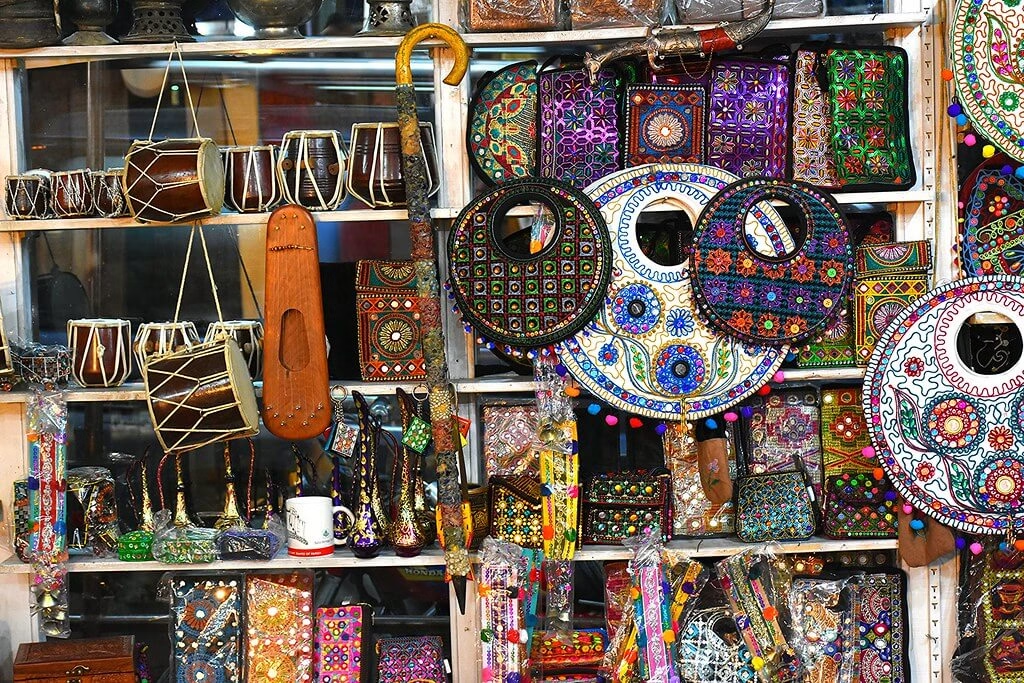
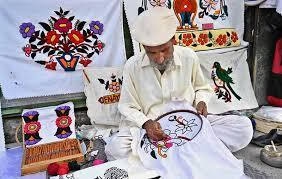

🙌 Community and Spiritual Traditions
For the people of Gilgit-Baltistan, spring is more than just a change in weather; it’s a profoundly spiritual season of renewal. Communities view it as a time for fresh starts, cleansing, and blessings. Local prayers and blessings for a bountiful harvest are common, seeking divine favor for the agricultural year ahead.
Communal gatherings, often centered around shared meals and cultural performances, strengthen community bonds. These celebrations often reflect a fascinating blend of ancient beliefs, including ancient Buddhist influences (especially in Baltistan, stemming from its historical past) and the prevalent Islamic traditions. The reverence for nature, the cycles of life, and gratitude for sustenance tie all these spiritual threads together, making spring a deeply meaningful period for reflection and collective joy.
🌄Conclusion
Spring in Gilgit-Baltistan is an experience unlike any other. It’s a season where the majestic mountains shed their harsh winter guise and the valleys explode with colors. It is a time when ancient festivals fill the air with music and dance, and communities come together to celebrate life’s renewal. From the vibrant blossoms to the unique customs, every element contributes to a rich, unforgettable tapestry.
This region is a lesser-known gem of the Himalayas, offering a unique blend of natural splendor and deep-rooted culture. If you’re planning to visit Gilgit-Baltistan, there’s no season like spring to truly experience its soul. Come and discover the magic for yourself!
